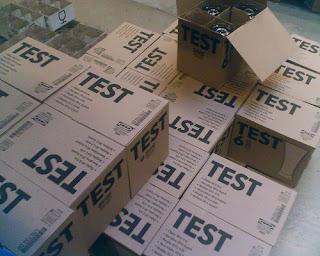 |
| Testing helps you get results. Image from Dave Bleasdale. |
2) Sent an email that encouraged customers to call and RSVP.
3) Sent an email that said "click here to RSVP."
Here's what happened:
1) 100 people responded to the post card.
2) 150 people responded to the first email.
3) 500 people responded to the second email.
4) 600 people attended the event, and about 50 of them decided they were ready to buy another car.
This was a great lesson for my associate in testing.
Until this point, he hadn't been a big believer in email, or in clicking on things, but this proved to him without a doubt that he had to make things easy for customers if he wanted results, and that an email with a one-click RSVP was far easier for customers than asking them to call.
Next time, he'll do the one-click email first, and follow up only with the people who don't RSVP with other methods. It'll be faster, cheaper, and more effective.
So what are your takeaways here?
- Just because you've always done something a certain way doesn't mean that's the way you should do it this time.
- You have to meet customers where they are. If everyone's on email, then that's where you need to be, no matter how much you'd rather they were on the phone, or on Facebook.
- Testing often tells you things that challenge your assumptions, which is why you should do it. Don't assume that one approach will always work better because that's what conventional wisdom tells you. In this case, the business owner assumed a telephone call-to-action would work best because it had worked in the past, and because his high-end clientele liked a personal touch. It turned out that high-end customers still prioritized convenience over everything else.
What have you tested lately, and what were the results?
Need help setting up some tests? Let me know, I can help.
Related Posts
Email Isn't Dead! Make the Most of Your Email Program this Year
The Best Approach to Email Marketing









